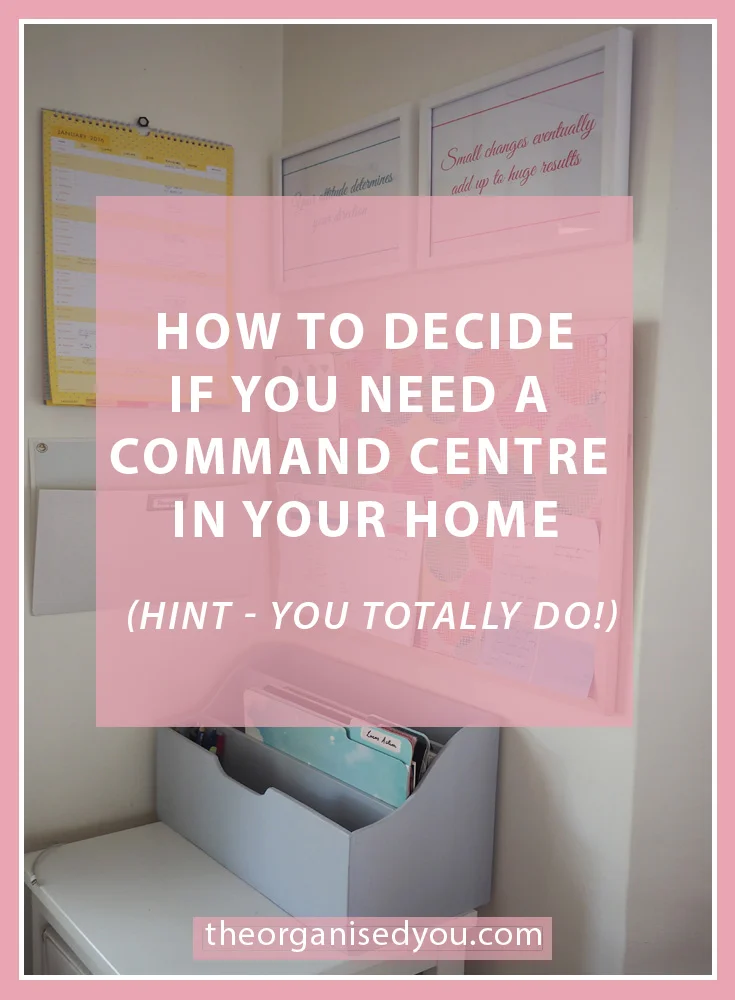Staying on top of the daily paper clutter can sometimes feel like a never-ending task, and those paper piles can start to feel like they're taking over your home! The best way to feel more in control of paperwork is to arm yourself with the best tools, devices and products to deal with it effectively. Today's post details 11 essentials that will help you get through your daily paper tasks more efficiently.
1 | A system for sorting daily incoming mail
The best way to deal with the daily paper clutter is to have a simple system in place which takes you 5 minutes (or less) every day to carry out. If you don't deal with paperwork every day, then you can almost guarantee that the paper piles will start building throughout your house - on kitchen benches, in the entryway, on the dining table...
To prevent this happening, go through the mail [and any paperwork from your child's school-bag] as soon as you walk through the door, and immediately toss out or recycle anything unwanted. Quickly file the rest into actionable folders with clearly labelled categories i.e. each family member's name, send, sort, shred, to do, file and/or move to it's home. Choose one day of the week to go through any to-do's and file any paperwork. This shouldn't take more than half an hour. Schedule it in your calendar or planner so you know to stick to this day!
A vertical file organiser is a great paperwork organiser, as is a hanging-wall unit (like this one I use to store my children's art supplies). I showed you my own simple system here and talked about how I bring files with to-do's into the middle section of this paper-sorting unit, then place them at the back when the job is complete. Keeping your own system simple with clear, actionable steps will ensure you maintain it and stay on top of daily paperwork.
>> Discover how to tame your paper clutter with confidence using effective systems to reduce overwhelm and increase productivity, with my online program Making Your Paper Work. Find out more here >>
2 | Display board/noticeboard
A display or notice board - whether it's cork, magnetic, a whiteboard or blackboard - will give you a place to display important upcoming events so you don't forget about them. I use our cork board to pin invitations, upcoming kinder events, vouchers, my weekly to-do list and my blogging schedule for the month. Anything I want to refer to at a glance!
Related Post: How to cover a cork board
3 | A calendar
An essential item that goes hand-in-hand with a display board would definitely be a family calendar. When those invitations come rolling in, or you're sent a message or email with an upcoming event, pop it straight onto your calendar so you remember it! Whether you use a paper version or digital, a calendar can serve a great way to cut down on clutter, as you don't have to hold onto every single bit of paper once you've recorded the relevant information on your calendar.
Related Post: Using a family calendar to plan your year
4 | Binder(s) for storing important information
A household binder is a fantastic tool for helping you save time and effort with paperwork tasks. It's a great way to keep track of all your important information, policy and account numbers, membership information and important phone numbers. You can also use a household binder to store any information that helps in the running of your home. This could include meal planning and blank shopping lists, a cleaning schedule, and current school or medical information about your child/children.
You can also set up binder systems for other household information, such as medical, cars, kids, pets, or manuals & warranties. We have a separate finance binder to store all our financial information, debt tracker and savings plan, and another for 'house inspiration' - perfect for our current renovation! I go through our binders once a year to clear them out and replace with updated information.
>> Learn how to create easy reference systems, such as household and finance binders, in the Making Your Paper Work course. Discover more here >>
5 | Filing cabinet or filing system
Although not everyone will have space for a filing cabinet in their home, you should have some sort of filing system in your home. Here you will store those important papers that can't be thrown out, but also do not need to be accessed often. A filing system could include things like marriage/birth/death certificates, passports, work policies, car information, receipts for taxation purposes, warranties, manuals, house plans, banking or mortgage information etc.
Rather than storing this information in a binder, which would make it extremely bulky and not as easy to quickly find what you're after, a filing system serves as a sturdy holding place for these important documents. If you don't have room for a filing cabinet in your house, or don't particularly like the look of them, then a large basket or box can also do the trick.
Related Post: How to organise paperwork at home
6 | Colour-coded file folders
A colour-coded filing system is such a time-saver for organising paperwork as it makes it much easier to find what you're after. In our own filing system, I used different coloured files to categorize the different areas of our life i.e. yellow = house, and includes house receipts, utility information, house plans, car info and car services. The other categories included work-related, personal (passports, birth certificates, health records), individual folders for each family member, and banking & insurance.
Having the different colours for different categories makes hunting through your papers much faster, and encourages you to keep all 'like' information together. Different coloured file labels would also do the job!
Related Post: How to organise the paper clutter {Inspiration}
7 | Magazine files
If you're short on space for storing paperwork, or have bulkier paper collections that you need to hold onto, then magazine files can be a great solution. You could store them in your main living area or home office to sort incoming paperwork, hold information about your child's education, to store magazines, as a catch-all for recipe clippings or recipe books, or any other way you find useful! We use them in our home office to hold printer paper, and laminating pouches.
8 | Memory boxes
The easiest way to keep sentimental items from getting mixed up with everyday paperwork is to set up a memory box for each family member. A memory box is a place to store special keepsakes that you can't bear to throw out, and would like to be able to look back on in a few years.
I have a memory box for each child, a combined one for my husband and myself, and our own childhood memory boxes. They are perfect for storing those things with sentimental value, such as special cards, letters, notes, certificates or awards, in a safe and contained spot.
>> Want to learn how to make your family life run more smoothly through routines, productive habits and goal-setting? Discover the steps in part 5 of my online program 'Making Your Paper Work'. Find out more >>
9 | School Memory Box
It's also a great idea to set up a school or 'education' box, that is separate from a memory box, for each child. In this, you can store mid and end-of-year reports, certificates, the yearly school photo, and any special schoolwork from the year. I am yet to create one of these for my own children - I've got time as my son is only in kinder this year! - but I'll let you know when I do.
10 | Display folders to store artwork
If you've got younger children, you would know that children's artwork is one of the biggest paper culprits. The best way to deal with it is to get onto a system that works for you, and is easy to maintain. I talked in this post about how I only select the best, most special pieces to display in my children's bedrooms - my son has a cork-board, while my daughter has this cute art display.
After the pieces have been up for a while and new ones come in, I transfer the older pieces into a personalised display book, with the date on the back of each piece. The display book is a special memory for the kids to look at throughout the year[s].
Related Post: 32 creative ideas for displaying your child's artwork
11 | Stationery and paperwork supplies
You won't get far trying to deal with your paperwork tasks without the right stationery and related supplies. It's really important to have things like envelopes, stamps, pens, pencils, erasers, a stapler, paper-clips, scissors, sticky-tape and any other essentials close at hand so that you don't have to go searching through the house every time you need to post a letter!
Keep these things neatly organised in a drawer with dividers, but resist calling it a 'junk drawer' as that is what it will inevitably become! Inserting some simple drawer dividers (or DIYing your own like I did) will ensure you can always quickly find what you need when dealing with paper-related tasks, to make them as quick to get through as possible.
Related Post: How to organise your stationery supplies

























